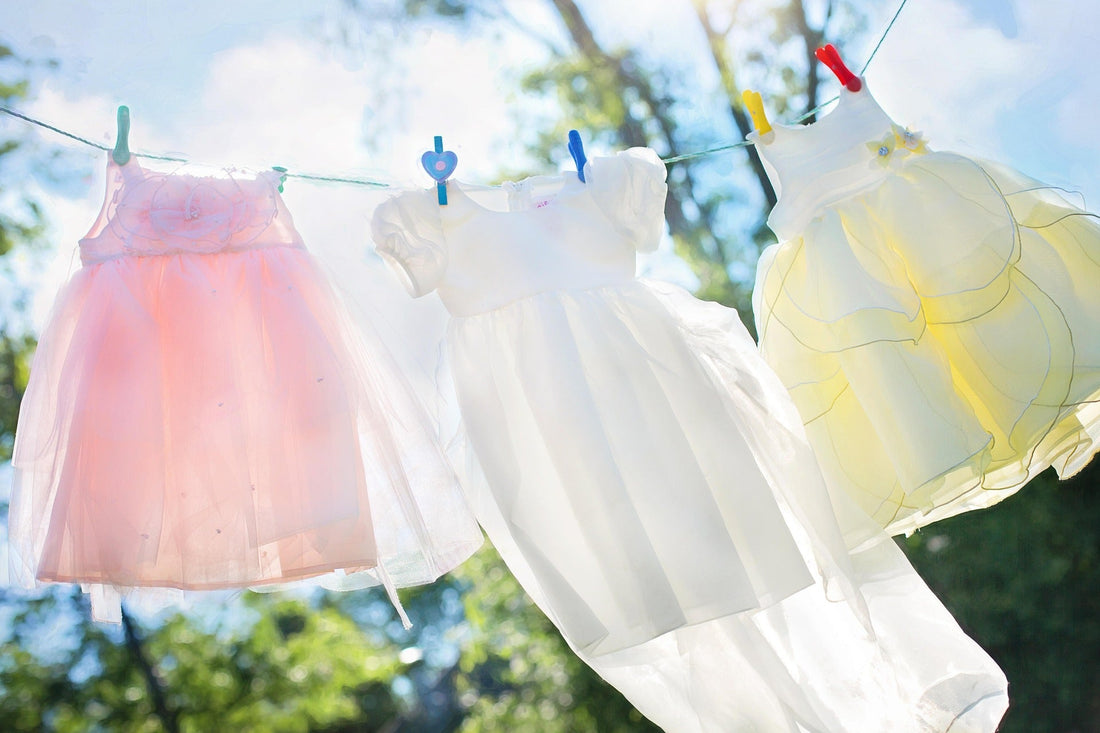
Slow Fashion: 10 Tips to Escape the Throwaway Society
Share
Slow fashion is more than just a trend—it's a conscious way to make fashion more sustainable and rethink your own consumption habits. With small but effective steps, you can help conserve resources and take a stand against the throwaway society.
Is your overflowing closet still full of clothes? Constantly decluttering, yet still finding yourself in the same situation? It might be time to rethink things. Slow fashion offers a way to transform not only your wardrobe but also your approach to fashion. Here are ten essential tips for incorporating slow fashion into your everyday life without sacrificing your style.
What is slow fashion?
Slow fashion is the direct opposite of fast fashion. It's about more conscious consumption, wearing clothes longer, and focusing on quality over quantity. High-quality, timeless pieces replace fast-moving trends, and sustainable, fair production methods ensure a better environmental footprint.
Why is slow fashion so important?
Fast fashion has a significant impact on the environment, particularly through the excessive use of resources and the use of harmful chemicals. For example, the production of a single cotton T-shirt requires approximately 2,700 liters of water – equivalent to one person's drinking water needs for two and a half years. Furthermore, toxic chemicals are released into waterways during the production and processing of textiles, placing massive strain on rivers and ecosystems. Particularly in countries with weak environmental regulations, wastewater from factories is often discharged unfiltered into nature. This endangers soils, drinking water, and the health of the people living there. The fashion industry is one of the largest sources of water pollution worldwide, a problem exacerbated by the short life cycles and throwaway mentality surrounding fast fashion.
With slow fashion, you can actively counteract this trend and appreciate your clothes again.
Advantages of slow fashion
- Less stress: A conscious approach to clothing means fewer bad purchases and a clearly structured wardrobe.
- Environmental protection: Less consumption saves resources such as water and energy.
- More style: Your outfits are based on timeless pieces that always look good.
- Save money: High-quality clothing lasts longer, and you invest less in constant new purchases.
10 tips to integrate slow fashion into your everyday life
1. Love what you already have
The first step toward slow fashion begins in your closet. Take a close look at the pieces you love and wear often. Consider how you can re-combine these pieces. Clothes that are well cared for often last for many years.
2. Invest in timeless designs
Opt for basics that can be easily combined with other pieces. High-quality jeans, a white blouse, or a classic blazer are examples of timeless all-rounders that never go out of style.
3. Second-hand and vintage
Secondhand shops and platforms like Vinted offer a huge selection of clothing that's environmentally friendly and often more affordable. Discover hidden gems with character!
4. Rent instead of buy
For special occasions that require a unique outfit, renting clothes is a good option. Clothing rental platforms offer beautiful pieces for events without them sitting unused in your closet.
5. Exchange and share
Organize clothing swaps with friends or family. This way, unused clothes will find new hands and you'll also get some exciting new pieces.
6. Prefer fair brands
Pay attention to seals and transparency when shopping. Brands that produce fairly and sustainably, like Armedangels or Jan 'n June, not only support the environment but also set an example for better working conditions.
7. Care for clothes properly
Use a gentle, eco-friendly detergent like Ecco Clean to keep your favorite clothes in shape and color for longer. Wash your clothes only when needed and at low temperatures to protect fabrics and save energy.
8. Repair instead of throwing away
A rip or a broken button? Learn how to mend your clothes yourself or take them to a seamstress or tailor. Upcycling projects breathe new life into your clothes and add a special charm.
9. Try a capsule wardrobe
Try the capsule wardrobe concept, which allows you to create many different outfits with just a few versatile items. It helps you keep track of everything and avoids unnecessary excess.
10. Be critical when buying
Before every purchase, ask yourself whether you really need the item of clothing and how often you'll wear it. If you decide based on the principle "Will I wear this at least 30 times?", you'll shop more consciously and sustainably.
Sustainability begins at home
There are many ways to add a more sustainable touch to your lifestyle, and slow fashion is one of them. If you're willing to consume less and invest more in quality and care, you can not only transform your wardrobe but also make a positive contribution to the environment.
If you're unsure how to get started, we have a tip for you: Try the gentle detergents from Ecco Clean - and you'll see how long your favorite items stay in shape.
Oh, and by the way: Ecco Clean is celebrating slow fashion on all social media platforms this July! Follow us on Instagram, Pinterest, and LinkedIn!
